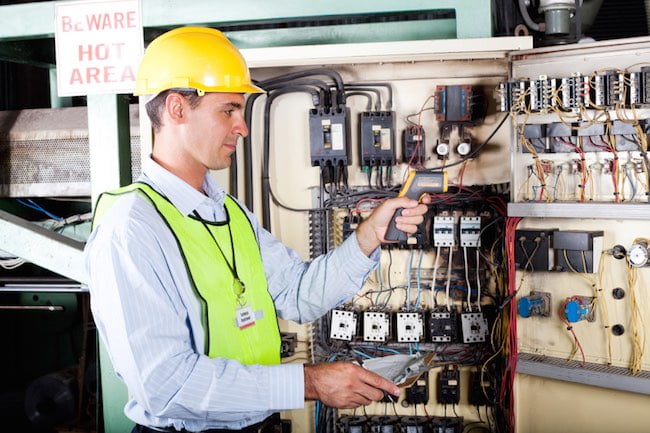How to Handle Hot Spots in Electrical Enclosures
High temperature is one of the major causes of failure of enclosure-housed electrical equipment. With enclosure cooling no longer being treated as an afterthought, several cooling methods are employed to regulate the temperature inside enclosures. Air conditioners are an efficient method to control and regulate the temperature inside the enclosure and bring it down to below ambient temperature. Other cooling methods utilizing lower ambient air temperature, like enclosure fans and air to air heat exchangers, are less expensive options. However, the most frequent problem you will have to address with enclosure fans is the presence of hot spots in your enclosure.
What are hot spots and where do they commonly occur?
Hot spots are commonly occurring thermal phenomena and refer to areas within electrical enclosures that are not cooled by the forced convection. It is impossible to say where hot spots might occur in an enclosure because the layout, heat load of the electrical equipment, size of the enclosure and ambient conditions are unique to each installation. Hot spots are a result of undercuts or impediments in the path of airflow that prevent air from reaching certain concealed spots within the enclosure. If you assume the enclosure to be a closed space, hot spots are bound to occur close to the top where hot air accumulates; the effect of hot spots is further magnified by extreme ambient conditions. In slightly more uncommon cases, hot spots could be a result of loose and corroded wiring, component failure, and unbalanced loads.
How can you locate hot spots in your enclosure?
Hot spots inside enclosures can be located only through advanced techniques like infrared testing, thermal flashlights, thermal imaging and heat transfer simulations. The easiest solution to capture surface hot spots is by installing a thermal camera inside the enclosure and adjusting the scale to reveal them. An alternative technique to locate prospective hot spots for an already built enclosure is to create a design of the current layout including the air inlet and exhaust vents and run a coupled air flow and heat transfer analysis after marking the heat sources. Thermal flashlights and IR testing belong to the latest advancements in thermal imaging that are more expensive and yield better results.
Handling hot spots inside your enclosure
Using forced convection methods comes with an inherent risk of hot spots. The presence of hot spots is attributed mostly to the improper positioning of fans in the enclosure, which prevents the air stream from removing heat from certain parts of the enclosure. This could be the result of air vortices, concealed pockets and impediments to the air flow.
-
Before finalizing the location of the inlet and exhaust vents in the enclosure, a parametric coupled analysis of the air flow and heat transfer within the space is advisable. You might want to consider a few location options that have the best heat transfer efficiency.
-
Installing circulating fans within the enclosure to ensure that air pockets are eliminated is a simple option.
-
Some hot spots cannot be removed by installing circulating fans because of other factors. In these cases, you might want to install a fan with a higher CFM and heat transfer rate.
-
If you have a fan at the exhaust that sucks the hot air out of the enclosure, it might be wiser to install a blowing fan at the inlet instead to increase the cooling efficiency.
-
Locating fans in areas with no immediate restrictions to air flow is an important approach. This lets the air stream build up to an optimum velocity that aids in better heat transfer.
-
Adding air deflectors helps in directing the air flow to critical areas, therefore aiding in the removal of hot spots.
-
For more difficult hot spots, investing in a fan tray as opposed to a single fan may increase the heat transfer rate inside your enclosure.
-
A more costly, but more effective option is to replace your cabinet fan with a closed loop system like an air to air heat exchanger or enclosure air conditioner. This not only helps eliminate hot spots but ensures that the internal temperature is more controllable increasing the lifespan of your precious equipment.
To leverage the experience of the expert sales team and learn more about how to get rid of hot spots in your enclosure, contact Thermal Edge now.


